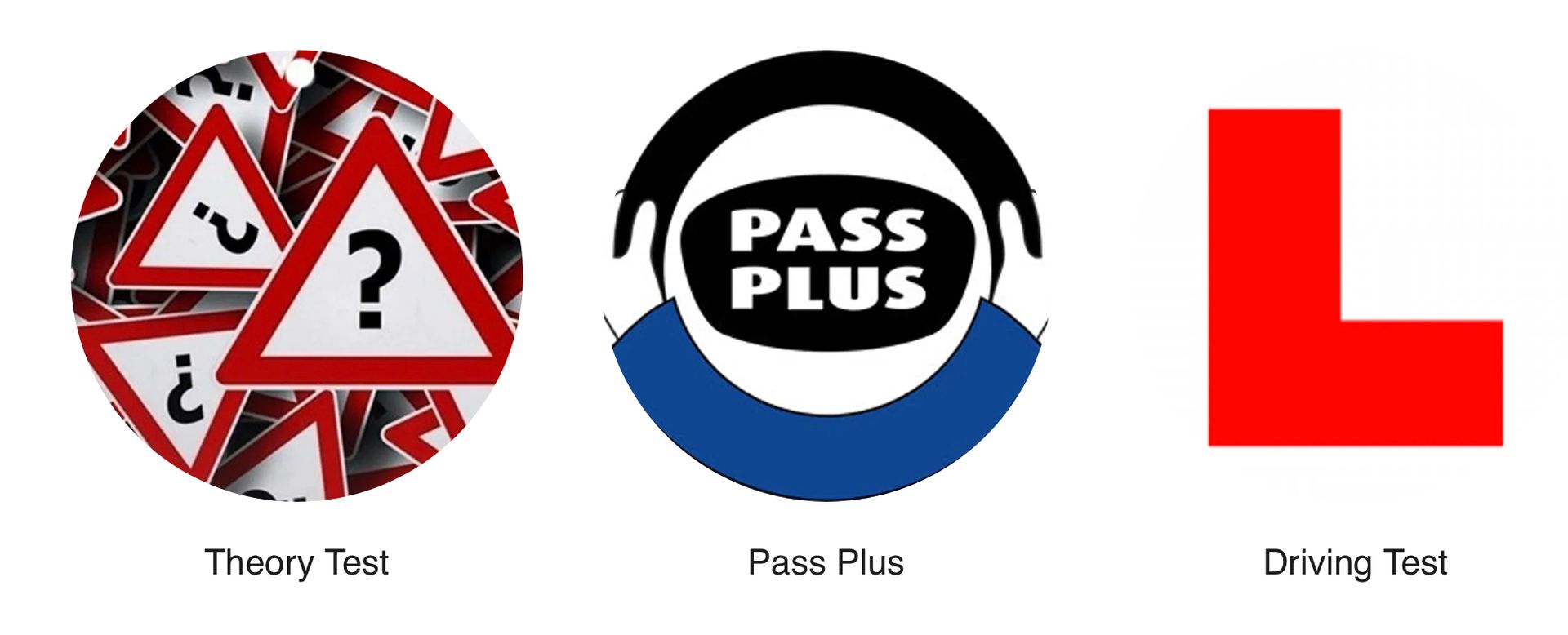DVSA Theory and Practical Driving Tests
1. Theory Test
The theory test has two parts, a multiple choice test and a hazard perception test which must be passed before you can book your practical test.
The test is done at a local test centre and to pass the Driving Theory Test you will have to answer 50 multiple choice questions and get 43 correct.
2. Theory – Hazard Perception Test
During the hazard perception test you will be presented with 14 short CGI video clips, 13 clips have 1 hazard and 1 clip has 2 – your response time to the hazard is measured. To pass the Hazard Perception Test you must score a minimum of 44 out of 75.
NB: To PASS the Theory Test you have to pass both parts 1 & 2 at the same time before you can book the practical test.
3. The Practical Test
To pass the driving test you must be able to drive safely in different road and traffic conditions and show that you know The Highway Code by the way you drive. You’ll drive for around 40 minutes.
There are 5 parts to the driving test:
- an eyesight check
- ‘show me, tell me’ vehicle safety questions
- general driving ability
- reversing your vehicle
- independent driving
The test is the same for both manual and automatic cars.
Eyesight check
You’ll have to read a number plate from a distance of:
- 20 metres for vehicles with a new-style number plate
- 20.5 metres for vehicles with an old-style number plate
New-style number plates start with 2 letters followed by 2 numbers, such as AB51 ABC.
You’ll fail your driving test if you fail the eyesight check. The test will end.
‘Show me, tell me’ questions
You’ll be asked 2 vehicle safety questions during your car driving test.
The examiner will ask you one:
‘tell me’ question (where you explain how you’d carry out a safety task) at the start of your test, before you start driving and one:
‘show me’ question (where you show how you’d carry out a safety task) while you’re driving
You’ll get one driving fault (sometimes called a ‘minor’) if you get one or both questions wrong.
You’ll fail your driving test if your driving is dangerous or potentially dangerous while you answer the ‘show me’ question.
Your general driving ability
You’ll drive in various road and traffic conditions, but not on motorways.
The examiner will give you directions that you should follow. Driving test routes are not published, so you cannot check them before your test.
Pulling over at the side of the road
You’ll be asked to pull over and pull away during your test, including:
- normal stops at the side of the road
- pulling out from behind a parked vehicle
- a hill start
You might also be asked to carry out an emergency stop.
Reversing your vehicle
The examiner will ask you to do one of the following exercises:
- parallel park at the side of the road
- park in a parking bay - either by driving in and reversing out, or reversing in and driving out (the examiner will tell you which you have to do)
- pull up on the right-hand side of the road, reverse for around 2 car lengths, and rejoin the traffic
Independent driving
You’ll have to drive for about 20 minutes by following either:
- directions from a sat nav
- traffic signs
The examiner will tell you which you have to follow.
They’ll set the sat nav up for you. You cannot use your own sat nav.
If you cannot see traffic signs
If you cannot see a traffic sign (for example, because it’s covered by trees), the examiner will give you directions until you can see the next one.
Going off the route
The examiner will not give you a fault for taking a wrong turning.
They’ll help you get back on the route if you do.
If you make mistakes during your test
You can carry on if you make a mistake. It might not affect your test result if it’s not serious.
Your driving examiner will only stop your test if they think your driving is a danger to other road users.
Other people at your test
Your driving examiner’s supervisor might sit in on your test to watch your examiner’s performance. If you refuse, your test can be cancelled and you’ll have to book another test and pay again.
Your driving examiner will ask if you want someone to:
- sit in the back of the car during the test
- be with you for the result and feedback
This will usually be your driving instructor, but you can take a relative or friend. They cannot take any part in the test.
Driving test faults and pass mark
At the end of your driving test, your examiner will:
- tell whether you whether or not you passed
- explain any serious or dangerous faults you made
